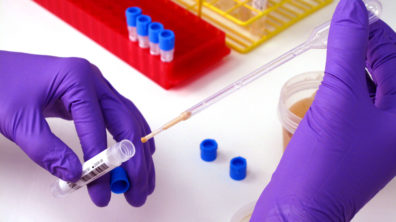
Gastrointestinal infection (GI) - May 30, 2023
Can the BD MAX™ System help reduce acute gastroenteritis costs?
Globally, between 3 and 5 million children are affected by acute gastroenteritis, accounting for 1.5-2.5 deaths every year.1
Acute infectious gastroenteritis comes with high morbidity and frequent hospitalisation, resulting in high financial costs to healthcare institutions.2,3
Discover the results of a recent cost-benefit analysis that explores the impact of molecular testing on acute gastroenteritis diagnostics compared to traditional methods.
The healthcare burden of acute gastroenteritis
Symptoms and complications of acute gastroenteritis have led to a considerable financial burden on healthcare institutions.4
These costs are compounded by factors such as longer hospital stays, return emergency room visits and hospitalisations from the emergency room.5
In the Netherlands and Belgium, annual direct medical costs of acute gastroenteritis amount to €945 million and €112 million respectively.4,6
Norovirus is the most common cause of acute gastroenteritis, costing $60 (€55.44) billion globally every year.7
Learn more about the common causes of acute gastroenteritis: Pathogens prevalence in acute gastroenteritis
A cost-benefit analysis of BD MAX™ Enteric Panels
Ferrer et al. conducted a cost-benefit analysis on healthcare system spending in diagnosing acute infectious gastroenteritis using the BD MAX™ Enteric Bacterial Panel, the BD MAX™ Extended Enteric Bacterial Panel and the BD MAX™ Enteric Viral Panel.5
They employed a Markov model across 1,336 retrospectively reviewed medical records to chart transition probabilities between different healthcare states, from the time of stool study to the completion of gastroenteritis-associated treatment during two 6-month periods in which either conventional procedures or BD MAX™ PCR multiplex panels were used.5
From this model, they found that the total healthcare cost for an individual suffering from acute gastroenteritis was €341 with conventional procedures and €314 with PCR, while a paediatric patient’s costs were €456 and €271, respectively.5
The authors found that the use of BD MAX™ Enteric Panels, when compared to conventional non-PCR-based approaches, resulted in an incremental cost benefit.5
With the implementation of these molecular testing methods, they reported €27 in savings per patient.5 The savings jumped to €185 per patient when only paediatrics were considered.5
These savings may be attributed to the lower demand for healthcare services and a more judicious use of antibiotics.5
Ferrer et al. concluded that multiplex molecular panels, such as those they studied on the BD MAX™ System, allow laboratories to quickly, sensitively and accurately diagnose acute infectious gastroenteritis, which can lead to faster treatment decisions and infection control measures.5
Read the full study from Ferrer et al.
- Dashti AS, Ghahremani P, Hashempoor T, Karimi A. Molecular Epidemiology of Enteric Adenovirus Gastroenteritis in under-Five-Year-Old Children in Iran. Gastroenterol Res Pract. 2016;2016:2045697. Doi: 10.1155/2016/2045697. Epub 2016 Jan 10.
- Ogilvie I, Khoury H, Goetghebeur MM, El Khoury AC, Giaquinto C. Burden of community-acquired and nosocomial rotavirus gastroenteritisin the pediatric population of Western Europe: a scoping review. BMC Infect Dis. 2012 Mar 19;12:62. Doi: 10.1186/1471-2334-12-62.
- Wiegering V, Kaiser J, Tappe D et al. Gastroenteritis in childhood: a retrospective study of 650 hospitalized pediatric patients. Int J Infect Dis. 2011 Jun;15(6):e401-7. Doi: 10.1016/j.ijid.2011.02.006. Epub 2011 Apr 12.
- Papadopoulos T, Klamer S, Jacquinet S et al. The health and economic impact of acute gastroenteritis in Belgium, 2010–2014. Epidemiol Infect. 2019 Jan;147:e146. Doi: 10.1017/S095026881900044X.
- Ferrer J, Giménez E, Carretero D, et al. BD MAX Enteric Bacterial, Bacterial Plus, and Virus Panels for Diagnosis of Acute Infectious Gastroenteritis: a Cost-Benefit Analysis. Microbiology Spectrum. 2022 Sep;10(5). Doi: 10.1128/spectrum.00880-22.
- Pijnacker R, Mangen M-JJ, van den Bunt G, et al. Incidence and economic burden of community-acquired gastroenteritis in the Netherlands: Does having children in the household make a difference? PLoS One. 2019;14(5):e0217347. Doi: 10.1371/journal.pone.0217347.
- Centers for Disease Control and Prevention. Norovirus Worldwide. Centers for Disease Control 2018. Available at: https://www.cdc.gov/norovirus/trends-outbreaks/worldwide.html?CDC_AA_refVal=https%3A%2F%2Fwww.cdc.gov%2Fnorovirus%2Fworldwide.html.
This list of references to third-party peer-reviewed material and the sites they are hosted on are provided for your reference and convenience only, and do not imply any review or endorsement of the material or any association with their operators. The Third-Party References (and the websites to which they link) may contain information that is inaccurate, incomplete, or outdated. Your access and use of the Third Party Sites (and any websites to which they link) is solely at your own risk.













